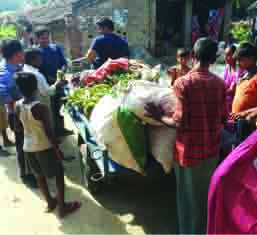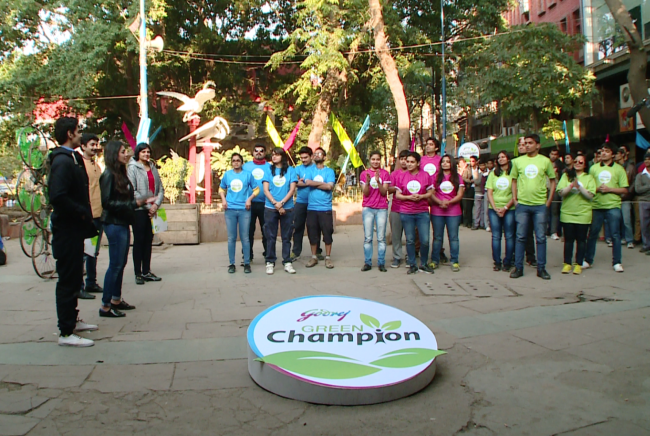I have just returned from our first ever Think Week (July 27-31) in Bihar with Saureen (Chief Technology Officer, Digital Green), Tejesh (Board Member, Digital Green Trust) and our team there. I’d asked all our employees to contribute ideas they thought would result in the greatest impact for us as an organization. My hope was that Think Week would serve as an open, inclusive space for exchanging ideas across the team and I am thrilled by the results. The range of ideas we received was quite wide and diverse which is a testament to the unique perspective that each of us brings to the team. I believe such initiatives will help us generate new thinking and source diverse ideas that will extend our edge in making an impact and grow our thought leadership more broadly.
Our Bihar team kicked the week off by categorizing the ideas that they submitted as well as everyone else’s and pitching them through skits and other creative ways. We spent the rest of the week in Muzaffarpur and Samastipur piloting ideas, meeting with the community, talking to partners, reflecting with one another, and observing the people around us. The informal, off-the-cuff moments sometimes offered the most interesting of insights. In many ways, the week felt much like when we began Digital Green at Microsoft Research nearly nine years ago: putting ourselves in unfamiliar places with an agenda that would get defined based on how each day went. (If you haven’t seen it already, our earlier blog records those days: https://sites.google.com/a/digitalgreen.org/inside-digital-green/updates.)
We had no intention of developing a fully baked new program through Think Week. Still, I was quite surprised by the level of reflection and experimentation that we were able to achieve. The big picture sense that I gained was that we need to think more end-to-end with respect to each of our interventions. We are making a real difference in our partners’ programs, which can be more transactional in nature, by engaging communities more regularly with locally produced videos and facilitated dialogue; however, we sometimes look at videos or adoptions as ends in themselves. A value chain framework — agriculture or health — is helpful to use when thinking things through in this manner.
In Bihar, we decided to stretch ourselves in the downstream direction of the value chain by piloting the idea of having a community engage its village-level extension agent to aggregate and transport produce on their behalf to a local market. We started small by just aggregating farmers’ produce ourselves and later adding layers of sorting it as well seeing if the community could take ownership of the entire process. Overall, we were impressed by the communities’ enthusiasm in jumping into the trial and having their produce (~500kg of vegetables over 3 days) sold for them by newbies to the trade. We found that there were simple things that farmers could do to double the prices that they realized, like choosing what they grow to mitigate against supply gluts or even just more carefully harvesting their produce. This type of information could easily feedback into our video production process and could serve as a better indicator of community demand and impact.
This is just one example which we will continue to explore, but seeing this as a generalizable framework for looking at each of our interventions from end-to-end highlights how all of the Think Week contributions are interconnected. For instance, we gain substantially by the foundational grassroots-level work that our partners have done in mobilizing community groups and developing a force of village-level extension agents. Though our partners may not always have the bandwidth, we can help extend that platform to be of greater value: whether that be by facilitating access to medical or agricultural inputs or helping individuals get jobs or take their produce to market. We should see how we can better leverage the technical expertise that we already have within our own team and bring in additional talent to support this end-to-end way of thinking based on the objectives that we’re seeking to achieve. By capturing data that is more closely associated with them, we’ll be confident that we are more accountable to community demand and, in the process, may find that we are able to engage new influencers.
I believe such initiatives will help us generate new thinking and source diverse ideas that will extend our edge in making an impact and grow our thought leadership more broadly.
—
Pictures from the week in Bihar:

